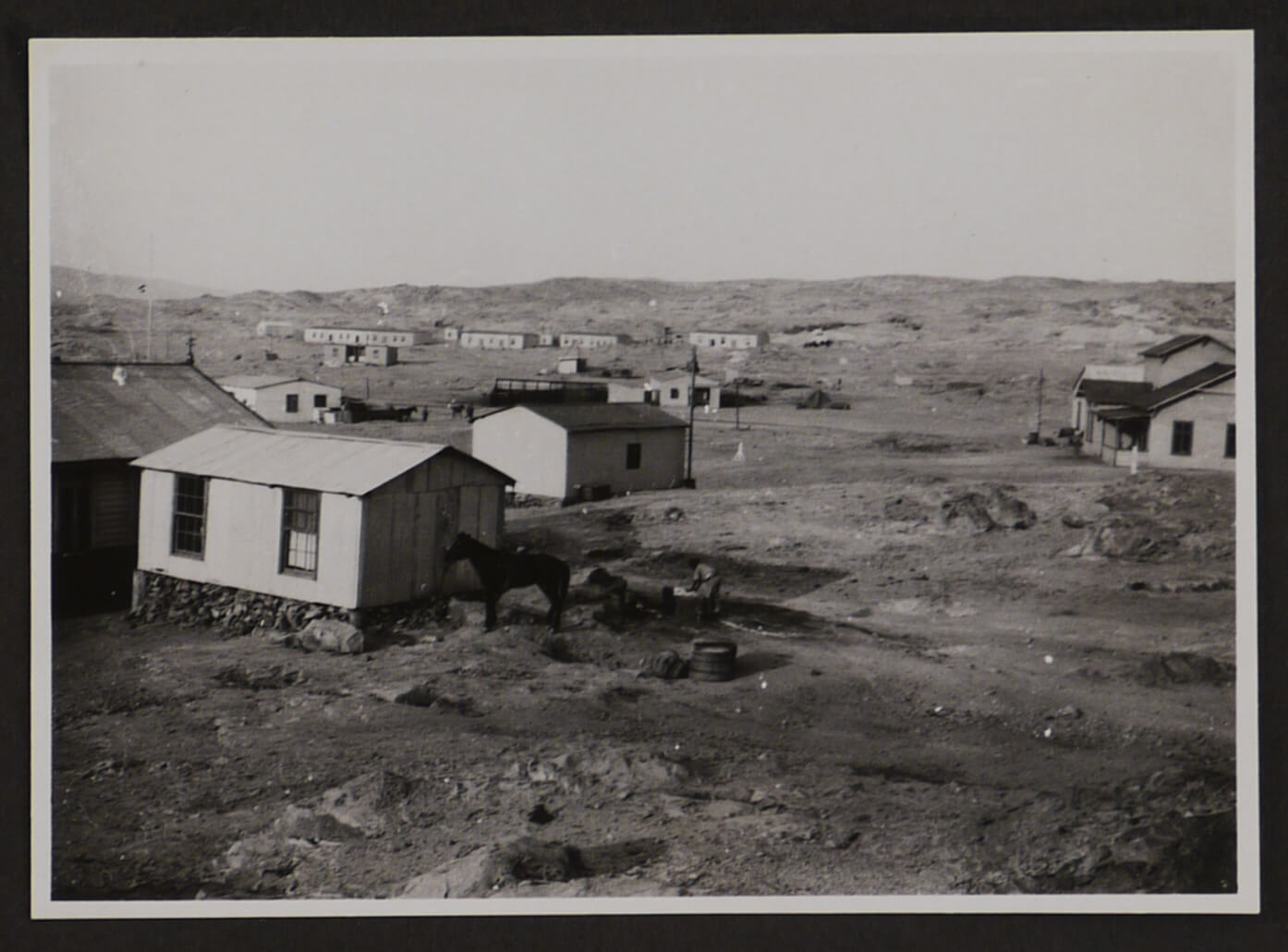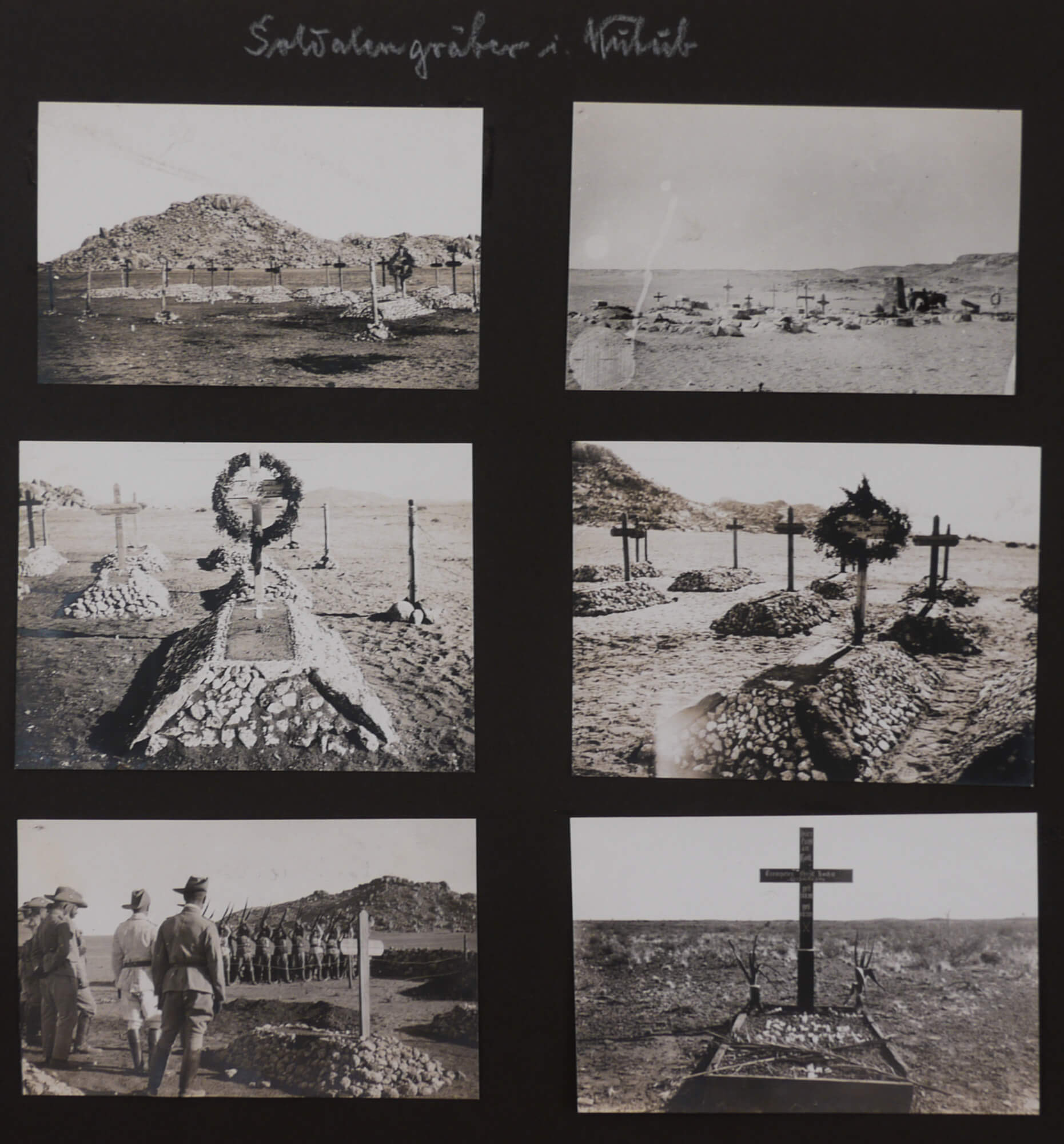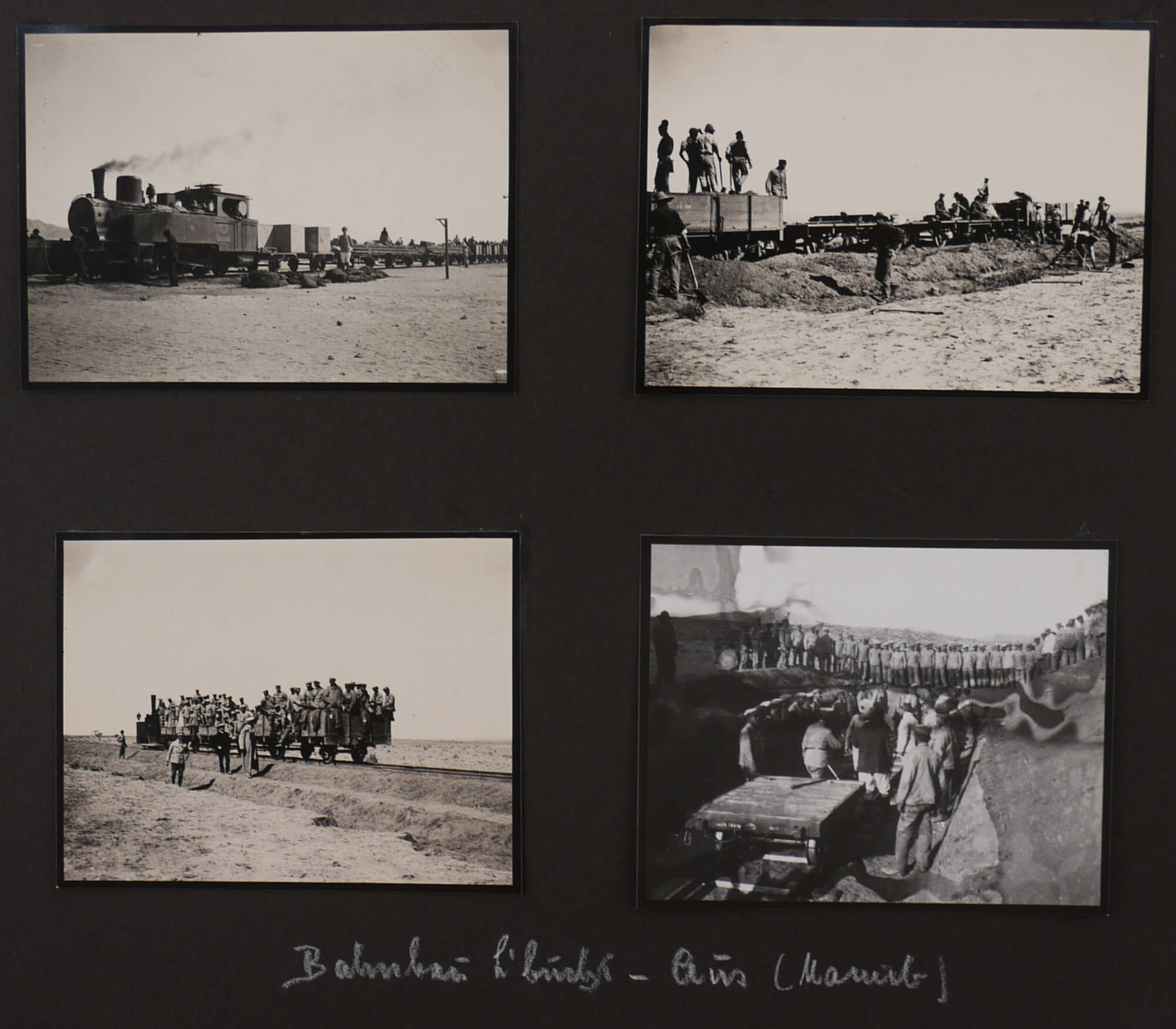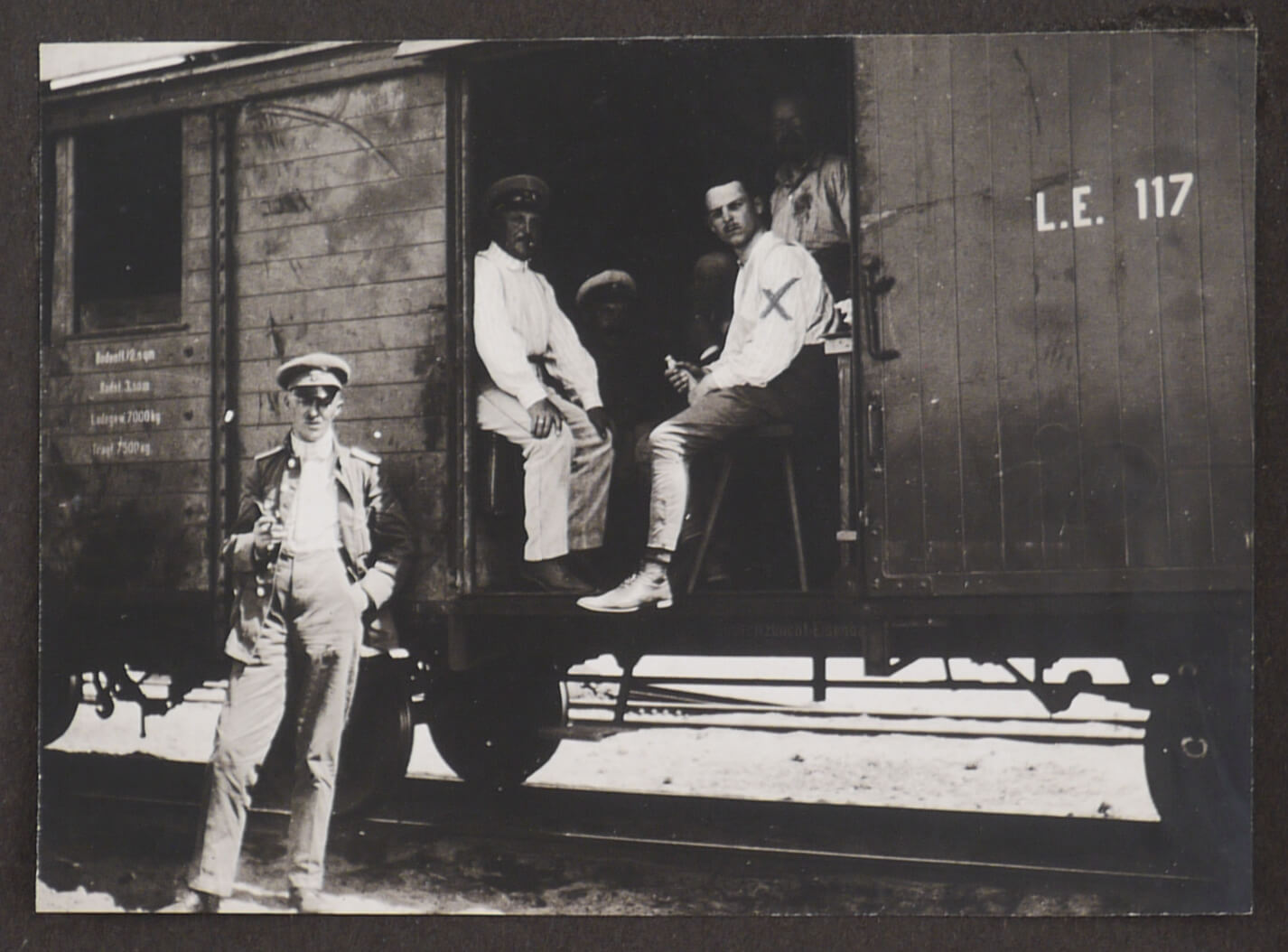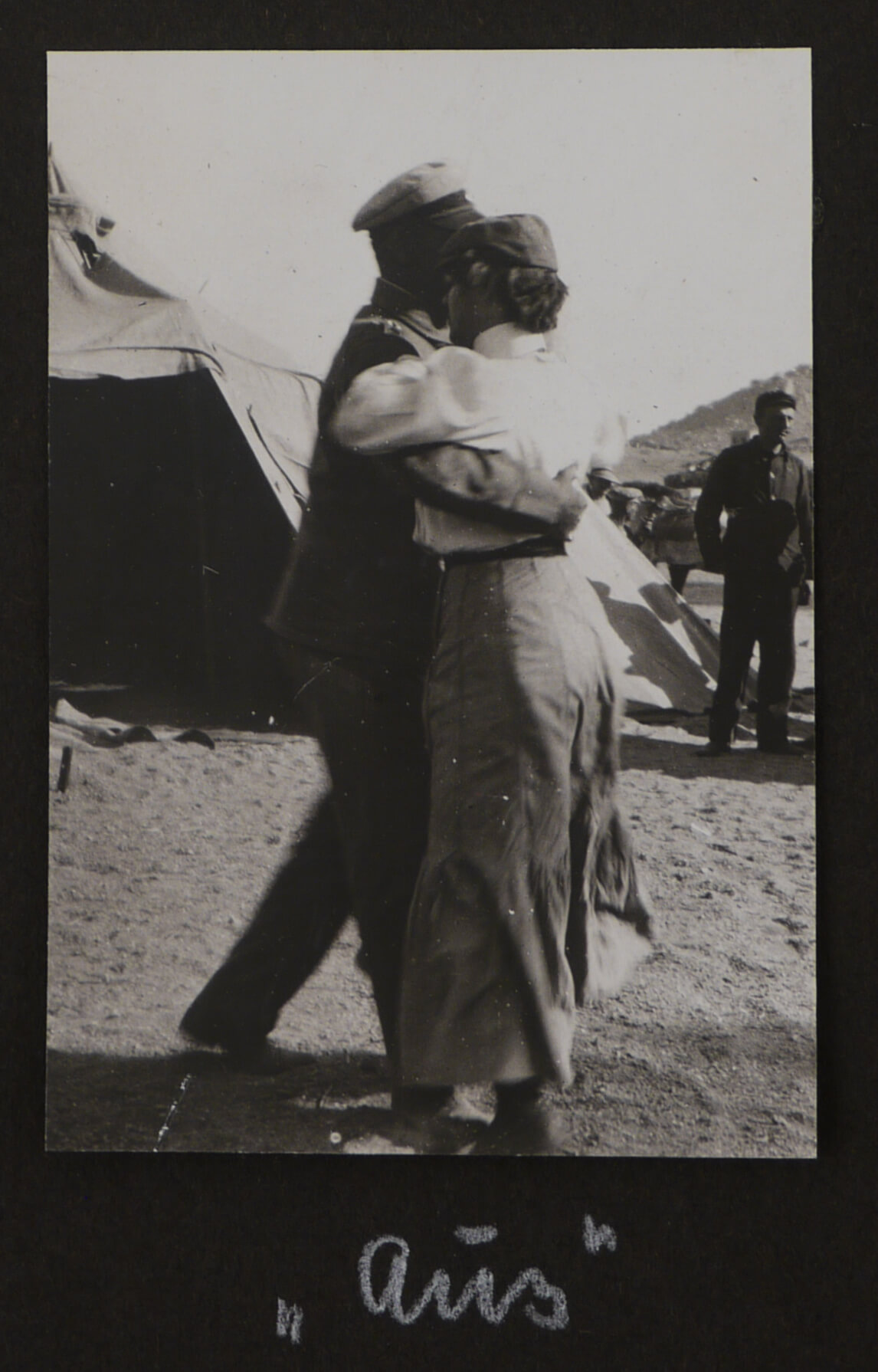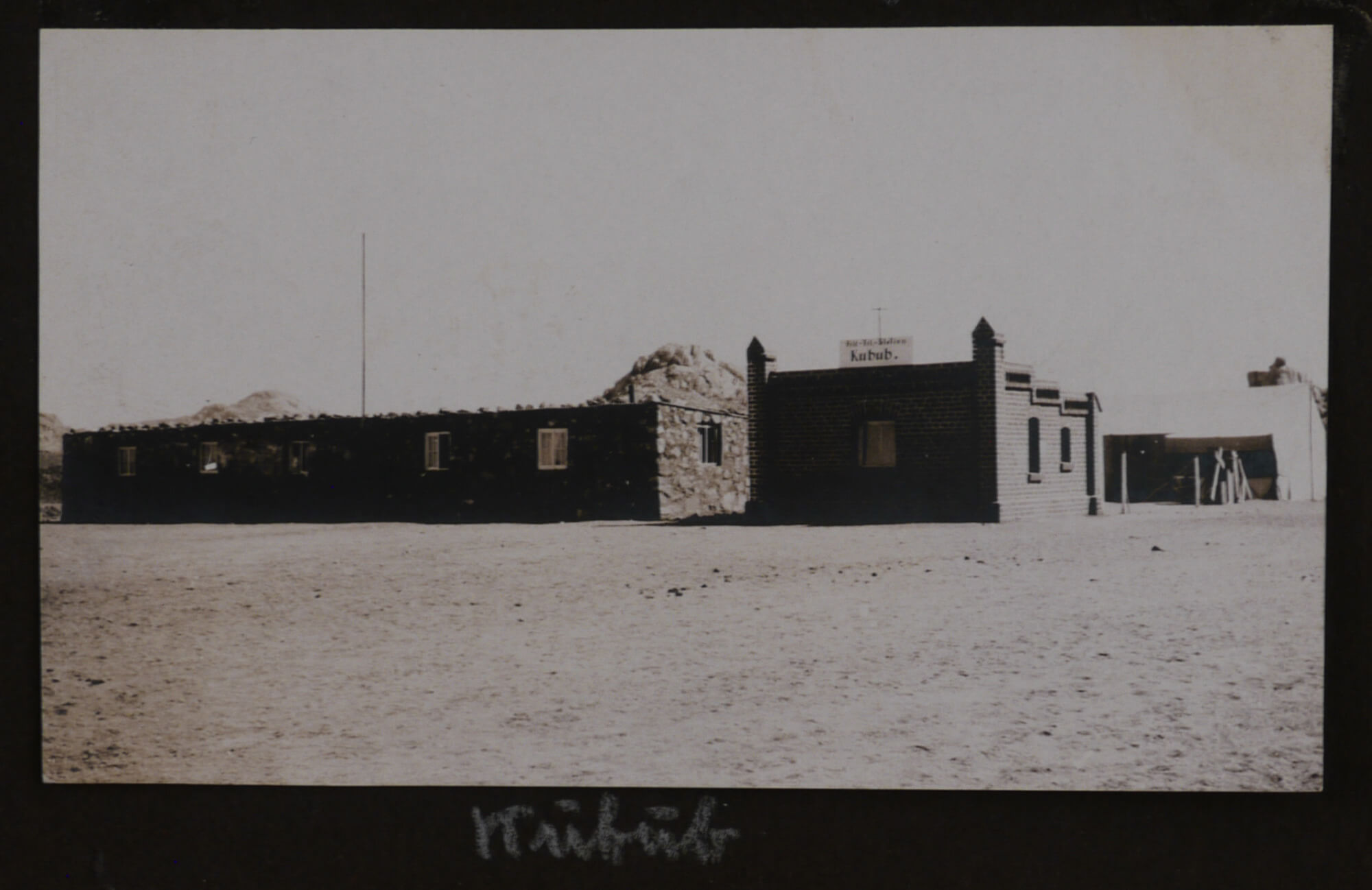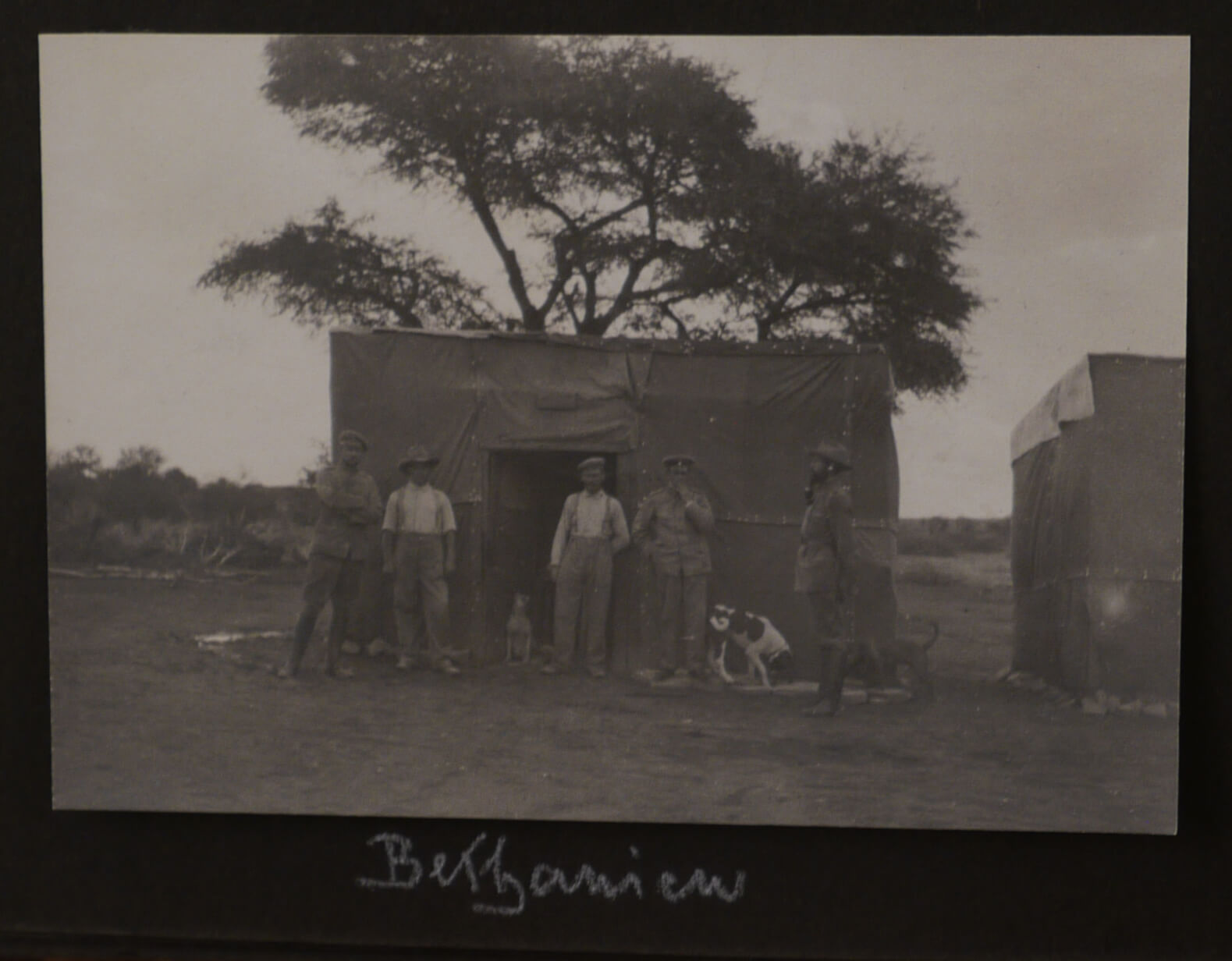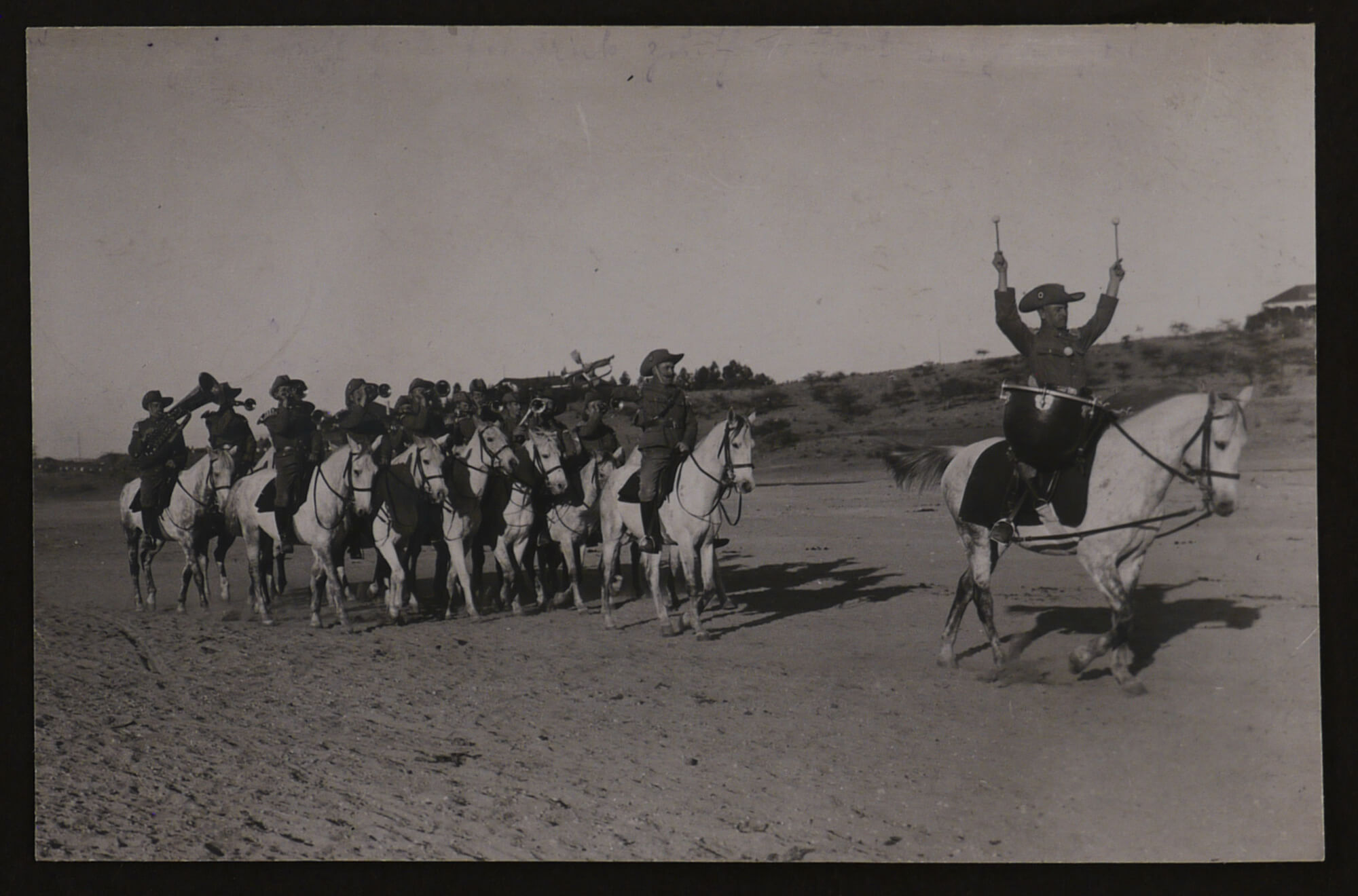












































#P82
Ca. 1904-1907
Oblong Folio album (ca. 27,5x35,5 cm). 31 card stock leaves with tissue guards. With 238 mounted gelatin silver photographs, including a three-part panorama ca. 8x29 cm (3 x 11 ½ in); the rest of the photos are from ca. 8x15 cm (3 x 5 ¾ in) to ca. 5x7,5 cm (2x3 in). Most photos with period white pencil captions in German on the mounts. Period brown half cloth album with marbled papered boards; gilt-lettered title “Afrikanische Erinnerungen” on the front board. A few images very mildly faded, but overall a very good album of interesting strong photographs.
Historically significant well-annotated album of original photos, taken and collected by a German Schutztruppe officer, employed during the construction of the Lüderitz-Keetmanshoop railway in German Southwest Africa in 1905-1907. The album contains several images documenting the Herero and Namaqua genocide by the German authorities. The construction of the line started after the initial suppression of the Herero-Nama uprising in 1904; the new railway was supposed to create a fast way to deliver German troops and supplies to the remaining centres of Nama resistance in modern-day southern Namibia. During the railway construction, the German authorities widely used the labour of native prisoners from the concentration camp on the Shark Island (Haifischinsel) near Lüderitz. The work conditions were appalling, without access to sufficient nutrition or medical help, and the mortality rate among the railway workers was extreme. The album includes a view of the Shark Island taken from Lüderitz and vice versa, a photo of “Unsere ersten Baracken” (the additional caption reads “Lüderitzbucht, 1904”), four portraits of distressed breast-naked native girls (one is captioned “Rahel, Herero,” another one also features a German officer), a portrait of a prominent resistance leader from southern Namibia Cornelius Fredericks (d. 1907) photographed on the Shark Island “as a prisoner,” several scenes with the native people working on the railway construction (“Kabellegen,’06”), etc.
Over a hundred photos in the album relate to the construction of the Lüderitz-Keetmanshoop railway or military actions against the Nama people in the region. Twenty photos from a survey trip between Lüderitz and Keetmanshoop show the sites near Kuibis, Kleine Kubub, Kanas, Sandverhaar, Kolmanskuppe, in the “Namib” desert, etc. Over a dozen views show the construction of the track from Lüderitz to Aus with machinery and workers, a German steam engine and a train carrying soldiers, etc. There are also interesting scenes of the inauguration of the Aus station (with a train car carrying the officials, a dancing couple, etc.), an official meeting with “Gouv. V. Lindequist” in Kubub (Friedrich von Lindequist, the Governor of German Southwest Africa in 1905-1907), over a dozen photos of various “water sources” in the region (stations in Aus, Kleine Kubub, the facility in Lüderitzbucht, an aloe tree, the river at Sandverhaar, waterfalls near Besondermaid, wind water towers in Windhoek), etc. There are also views of several military field stations and posts in the “Namaland” (with many signs clearly visible) – Kubub, Chamis (near Bethanien), Schlangenkopf, Keetmanshoop, Kuibis, Kanas, Schakalsküppe, Brackwasser, Sandverhaar, Bethanien, “Wüstenstation Grasabladeplatz,” and others. An excellent three-part panorama shows Kubub station and environs, marking officers’ and soldiers’ barracks, the lazaret, warehouses, directions to Lüderitz and Keetmanshoop, etc. There are also six photos of German soldiers’ graves in Kubub, with the signs on at least two of them readable (according to them, the soldiers died in 1905 and 1906). Other interesting photos show German Schutztruppe officers (with several names captioned), camel caravans delivering “proviant” to the front in 1906, German artillery guns, a Schutztruppe military brass band mounted on horses, etc.
The other photos show Swakopmund (the landing pier, the port and lighthouse) and Lüderitzbucht (water condensation station (built in 1897), the condensation station’s tower, naval ships in the harbour, wooden houses). Several photos portray the compiler of the album – with other officers at “Petersenkai Hamburg, Afrika […?] von d. Einschiffung. November 1904,” “on vacation” in Germany in 1906 (“auf Urlaub, 1906”), and posing in the “Heimat [home] -Uniform,” the uniform of “Leutnant d. Kaiz. Schutztruppe für S.W. Afrika,” and colonial “Korduniform.” About fifty photos at the beginning of the album were taken during the compiler’s voyage to German Southwest Africa from Hamburg on board of a Woermann Line steamer and show the ship’s decks and bridge, German officers and soldiers (with several names listed, i.e. “Dr. Wickel,” “Dr. Kahle”), maneuvres with cutter boats, horses’ quarters, views of Cape Verde, Las Palmas (Canary Islands), Funchal (Madeira), the celebration of crossing the Equator, etc. Overall a historically important original visual source on the history of the Herero Wars and early railway construction in Namibia.






